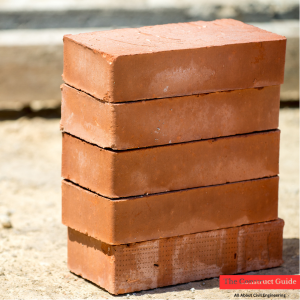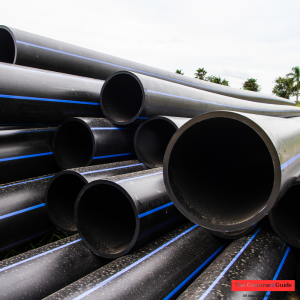Introduction
Building materials play a crucial role in the strength, durability, and efficiency of any construction project. They determine the structure’s stability, insulation, maintenance requirements, and overall lifespan. Over the years, construction materials have evolved from traditional choices like wood, stone, and clay to advanced materials such as composites, polymers, and smart concrete. Each material has unique properties that make it suitable for specific applications in residential, commercial, and industrial projects. Civil engineers, architects, and builders must carefully select materials based on factors like load-bearing capacity, weather resistance, environmental impact, and cost-effectiveness. Sustainable and energy-efficient materials are now gaining popularity as the industry moves toward greener construction practices. Whether you are a student, a construction professional, or an industry expert, understanding the characteristics and uses of different building materials is essential for making informed decisions. This guide explores various building materials and their applications in modern construction.
Classification of Building Materials
Building materials are classified based on their origin, composition, and purpose. The two primary categories are natural and man-made materials.
Natural materials include wood, stone, clay, and bamboo, which are sourced directly from nature and used with minimal processing.
Man-made materials, such as concrete, steel, glass, and composites, undergo processing to enhance their properties and suitability for construction.
Another classification divides materials into traditional and modern types.
Traditional materials like bricks, timber, and limestone have been used for centuries due to their availability and durability.
Modern materials, such as engineered wood, polymer composites, and 3D-printed materials, offer improved performance, sustainability, and efficiency.
Furthermore, materials can be categorised based on their function—structural materials (concrete, steel, timber), finishing materials (tiles, glass, paint), and insulation materials (fibreglass, foam). This classification helps engineers and builders select the most appropriate material for each stage of a construction project.
Common Types of Building Materials and Their Uses
1. Wood

Wood is a versatile, lightweight, and aesthetically pleasing building material used in structural frameworks, flooring, furniture, and interior décor. Hardwoods like oak and teak offer durability, while softwoods like pine are cost-effective. Despite its natural insulation properties, wood is vulnerable to fire, termites, and moisture damage. Treated wood and engineered wood products like plywood and laminated veneer lumber improve its resilience and usability.
2. Concrete

Concrete is a strong, durable, and fire-resistant material widely used in foundations, roads, bridges, and buildings. It is made from cement, water, and aggregates like sand and gravel. Reinforced concrete, which includes steel bars, enhances its tensile strength. Despite its high durability, concrete can crack over time. Innovations like self-healing concrete and geopolymer concrete are improving its longevity and sustainability.
3. Steel

Steel is a high-strength, durable, and corrosion-resistant material used in skyscrapers, bridges, and industrial buildings. It has high tensile strength, making it ideal for reinforcement in concrete structures. Though expensive, its recyclability and long lifespan make it a preferred choice for sustainable construction. Protective coatings like galvanization prevent rusting, ensuring structural integrity in harsh environmental conditions.
4. Brick & Masonry

Brick and masonry materials are known for their fire resistance, durability, and energy efficiency. Clay bricks, concrete blocks, and stone masonry are used in walls, pavements, and facades. Masonry structures require minimal maintenance and offer excellent thermal insulation. However, the material is heavy and labour-intensive to install. Innovations like AAC (Autoclaved Aerated Concrete) blocks have improved masonry efficiency by offering lightweight and sustainable alternatives.
Also Read: Types of Test on bricks for construction
5. Glass

Glass is a versatile and visually appealing building material used in windows, facades, skylights, and partitions. It allows natural light, enhancing energy efficiency and indoor aesthetics. Modern advancements have introduced tempered, laminated, and low-emissivity (Low-E) glass for improved insulation and safety. Though fragile, double-glazed and smart glass technologies improve its durability and thermal performance, making it a key material in modern architecture.
6. Plastic

Plastic is a lightweight, durable, and cost-effective material used in pipes, insulation, roofing sheets, and decorative panels. Materials like PVC, polyethylene, and polycarbonate offer excellent water resistance and flexibility. While traditional plastics pose environmental concerns, recycled and bio-based plastics are emerging as sustainable solutions. The construction industry is increasingly using eco-friendly plastic composites to reduce waste and promote green building practices.
7. Stone

Stone is a naturally occurring, strong, and long-lasting building material used in monuments, flooring, and exterior walls. Common types include granite, marble, limestone, and sandstone, each offering unique textures and durability. Though highly durable, stone requires labour-intensive installation and is expensive to transport. Modern alternatives like engineered stone and stone veneer provide cost-effective and lightweight options for contemporary architecture.
8. Aluminium
Aluminium is a lightweight, corrosion-resistant, and recyclable material widely used in windows, doors, curtain walls, and roofing sheets. It withstands extreme weather conditions and requires minimal maintenance. Despite its energy-intensive production, aluminium’s high recyclability offsets its environmental impact. Powder-coated and anodized aluminium enhances durability, making it an ideal choice for sustainable and energy-efficient construction projects.
Choosing the Right Building Material
Selecting the appropriate building material is a critical decision that impacts the project’s cost, durability, and environmental footprint. Engineers and architects must evaluate several factors, including structural requirements, climate conditions, and sustainability. For instance, wood is ideal for residential construction, while concrete and steel are preferred for high-rise buildings due to their load-bearing capacity. Thermal performance is another key consideration, as insulation materials like fibreglass and foam reduce energy consumption. Maintenance and durability also play a role—brick and stone require minimal upkeep, while wood needs protection from moisture and pests. Additionally, cost and availability influence material selection, with locally sourced materials reducing transportation expenses. Sustainable choices, such as recycled plastics, bamboo, and low-carbon concrete, are gaining traction due to their environmental benefits. By carefully assessing these factors, builders can select the best materials to create durable, cost-effective, and eco-friendly structures.
Future Trends in Building Materials
The construction industry is rapidly evolving, with innovative materials shaping the future of sustainable and smart buildings.
Self-healing concrete, which repairs its own cracks using bacteria, extends the lifespan of structures and reduces maintenance costs.
3D-printed materials allow for faster, more efficient, and cost-effective construction, minimising waste and enabling customised designs.
Bamboo, a fast-growing and renewable material, is gaining popularity as a strong, lightweight alternative to traditional wood.
Recycled materials, such as reclaimed wood, recycled steel, and plastic-based composites, contribute to waste reduction and sustainable construction.
Smart materials, like electrochromic glass that adjusts transparency based on sunlight, enhance energy efficiency in buildings. Innovations in biodegradable insulation, carbon-negative concrete, and nano-engineered coatings are also paving the way for greener, more resilient construction.
As environmental concerns grow, the demand for sustainable and high-performance materials will continue to rise, shaping the future of modern architecture and infrastructure.
Conclusion
Understanding different building materials is crucial for civil engineers, architects, and construction professionals to create safe, efficient, and long-lasting structures. Whether using traditional materials like stone and wood or embracing modern advancements like self-healing concrete and recycled composites, the right choice can impact a building’s durability, cost-efficiency, and environmental sustainability. With ongoing innovations and a growing emphasis on green construction, the industry is moving toward energy-efficient and eco-friendly solutions. Engineers and builders must stay informed about new materials and technologies to meet structural demands, regulatory standards, and environmental goals. By selecting high-quality, sustainable building materials, professionals can contribute to a future of stronger, smarter, and more sustainable infrastructure.
Call to Action (CTA)
Need expert guidance on choosing the best building materials? Connect with industry professionals to find the right materials for your next construction project.
